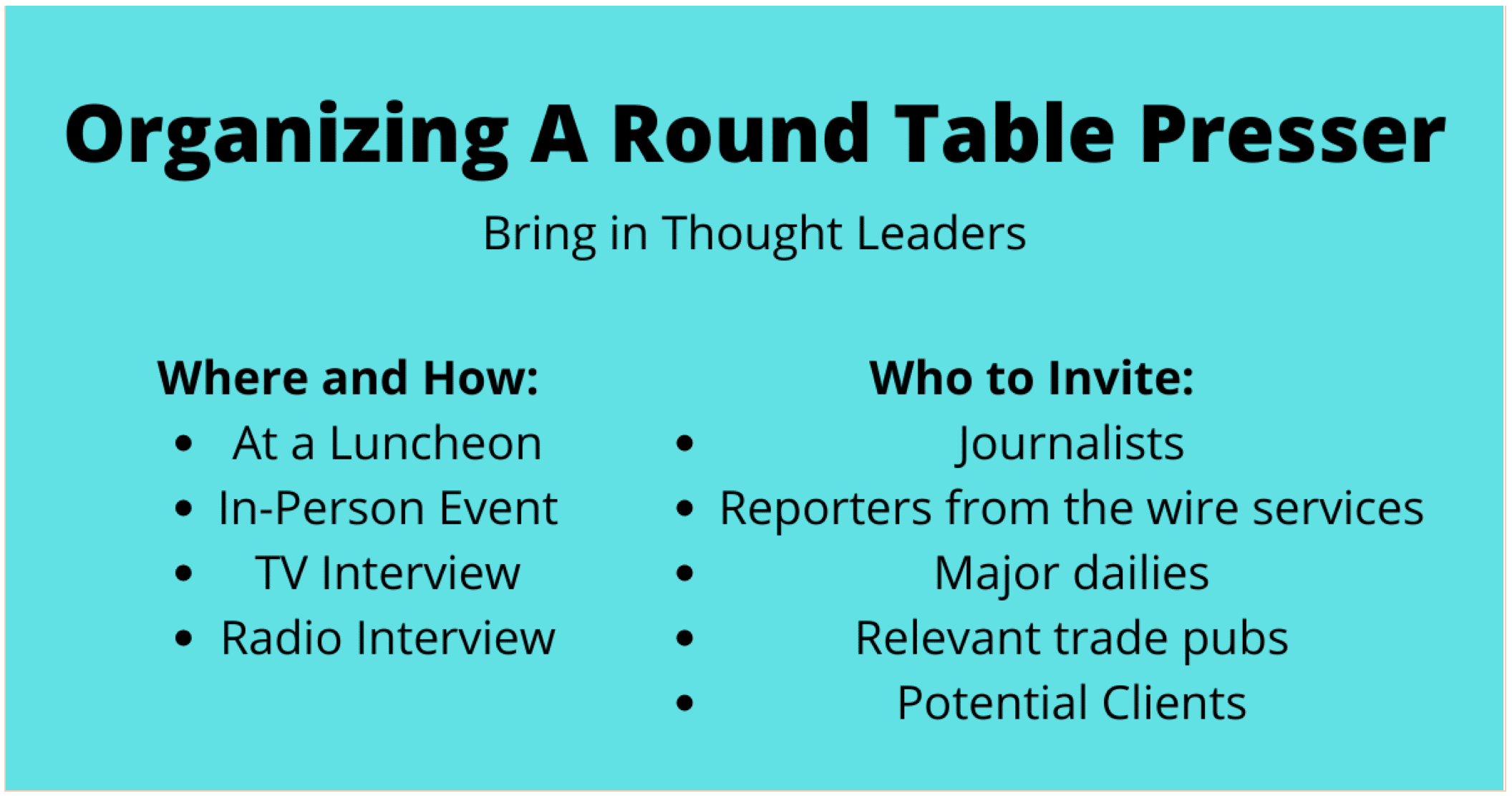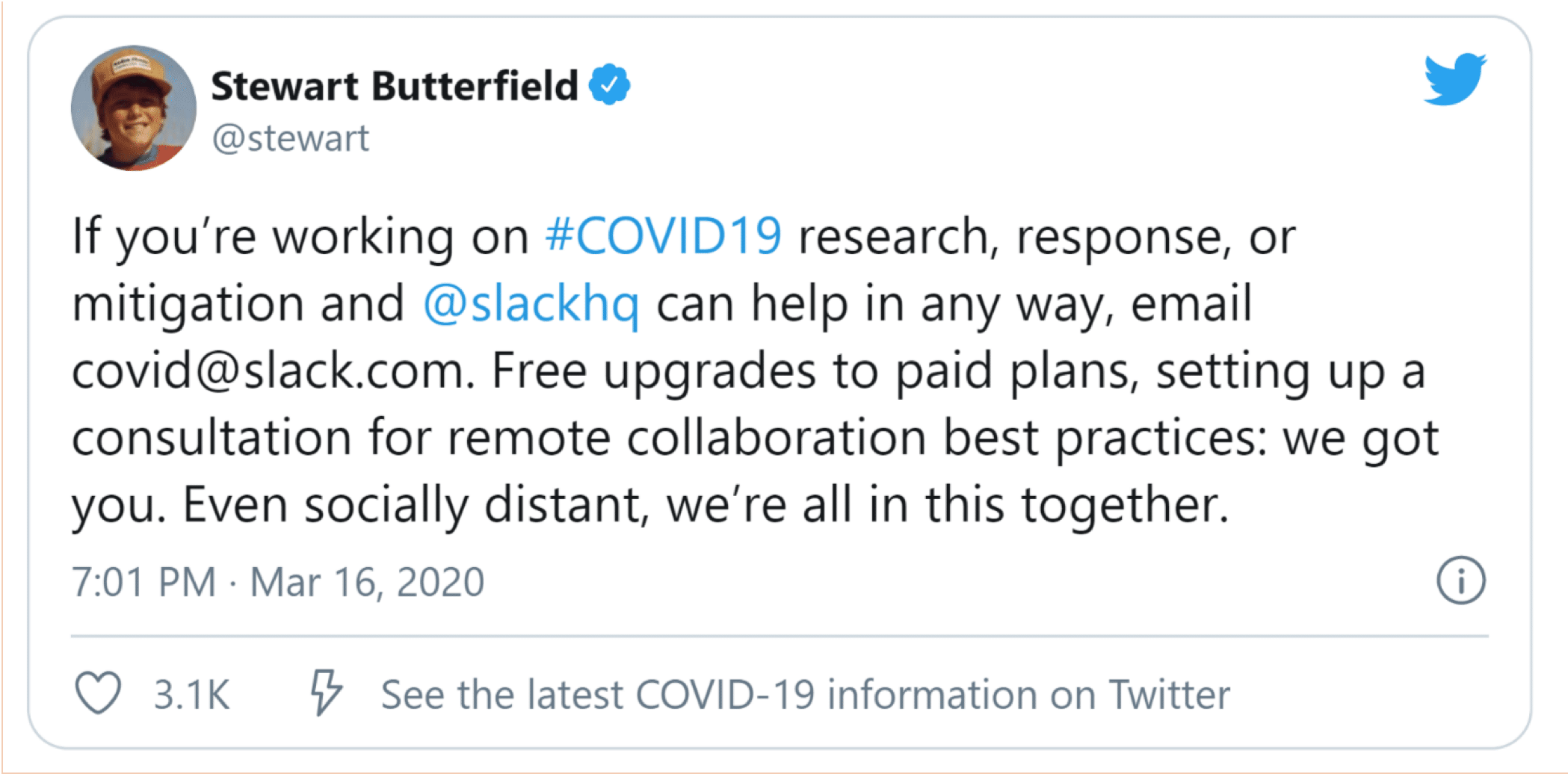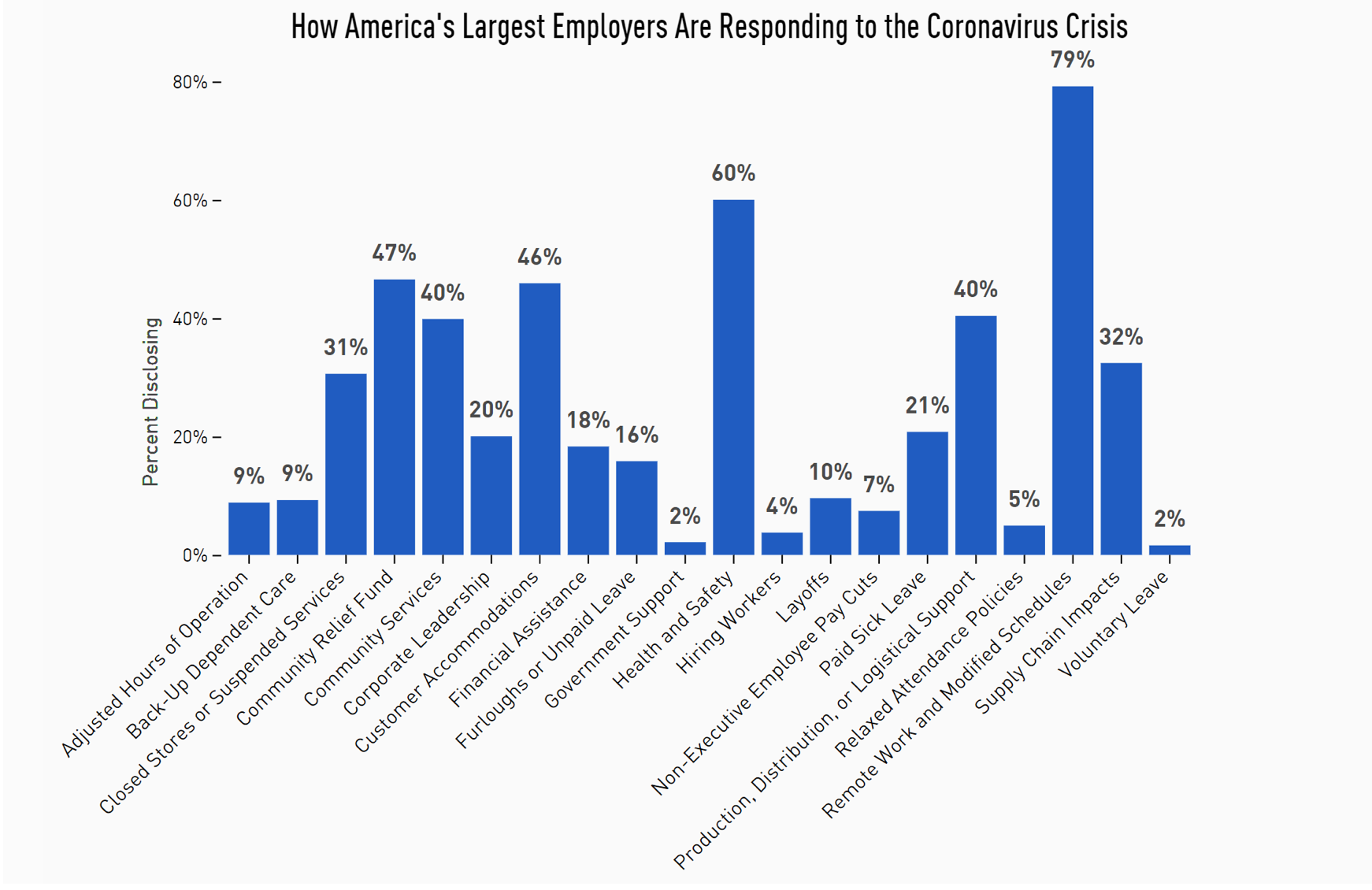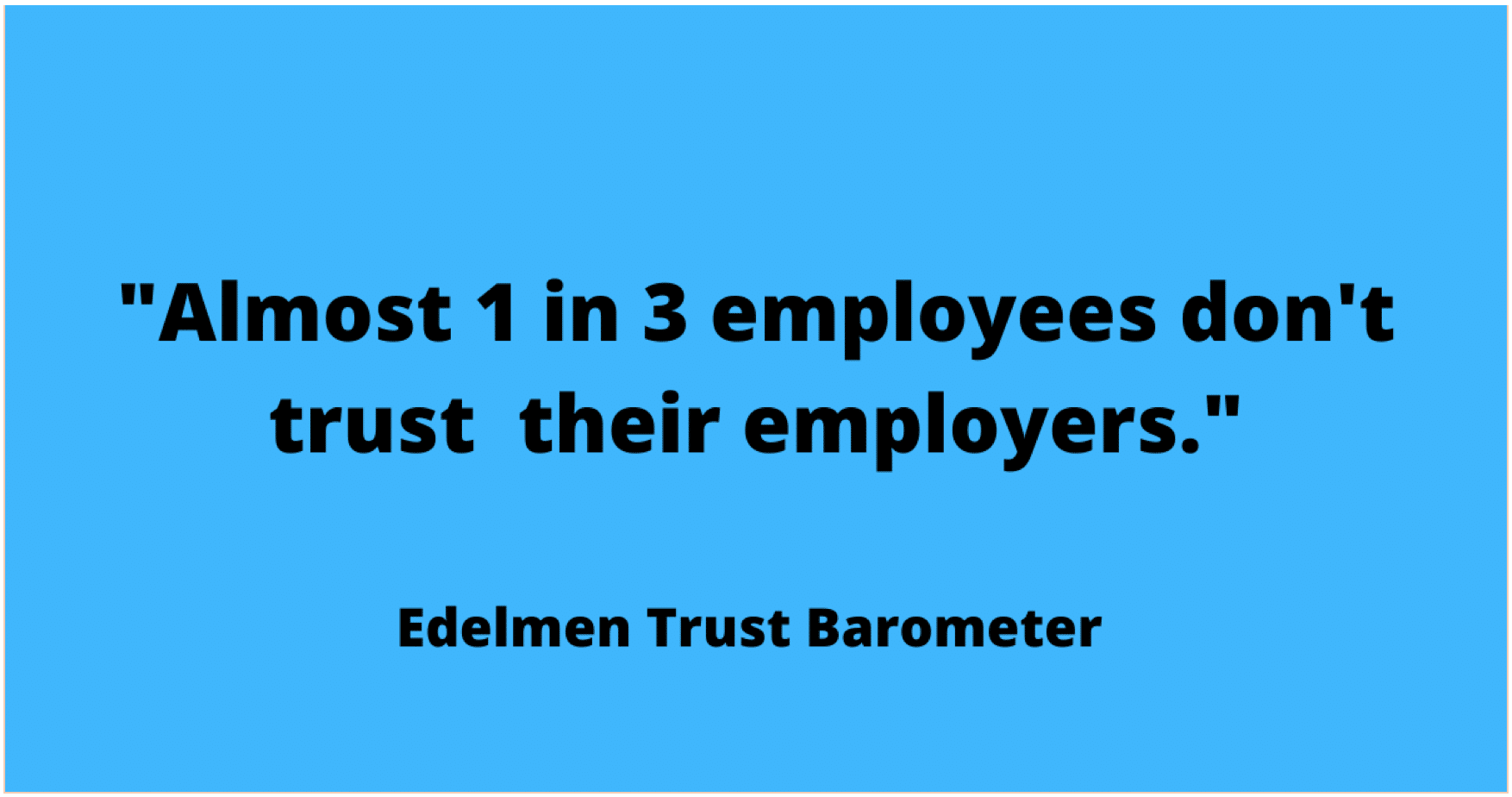PR as a branding strategy should be handled with the utmost care, especially in crises. The pandemic that has gripped our lives is something we have never faced. It is important to understand that in times where there is mass unemployment, sickness, death, and economic uncertainty, silence is not an option. With this in mind, it is essential to pay attention to the pulse of the public to ensure that your marketing messages do not come across as tone-deaf.
It is natural to look for leaders in a crisis, and if your brand can prove itself as a leader during these challenging times by setting an example, there is no better branding strategy.
We often look for the good in others, and it is always heartwarming to see a brand stand up not only to improve its bottom line but for the common good of society. The best marketing messages in times of crisis are honest, reassuring, thoughtful, and helpful. Considering these are a few of the leading emotional drivers of brand humanity, they are beneficial to ensuring a sincere human connection in your messaging.
Here are some ways to use PR as a branding strategy to enhance your reach during the pandemic.
1. Demonstrate thought leadership
It is not going to help your brand if you send the same messages via the usual channels in times of a pandemic. A crisis demands innovation and thought leadership more than ever.
If you have new and practical solutions for the problems in your space or solutions to the issues related to the pandemic, now is the time to get your ideas across and lead the way.
Look at setting up a round table presser and bring in an exclusive list of clients and partners. They will help you get your message across to other people. Especially in these pandemic times, a PR branding strategy doesn’t require huge funds or rallies. It needs to be strategic.
2. Support your community
What better time than the pandemic to address the concerns that your customers are facing? If you can afford the resources, doing your part for the greater good will build goodwill for your brand.
Find the businesses that have stories and work together to grow. Small businesses are the backbone of a community. If you can help them, you will also help your community. Get involved. This process will foster relationships and ultimately help your brand improve reach.
It is vital to highlight the support that your business provides during these hard times. Also, be sure to note any donations or offerings you are making for communities affected by the pandemic (this can work well as a branding strategy).
For example, when the pandemic began to make waves across the globe, Slack swiftly made plans to upgrade free accounts to allow organizations to collaborate remotely.
If you can execute and create PR for creative projects that help people during the pandemic, you can leverage the PR to build your brand.
3. Adapt your business strategy
If your business has been overly reliant on your customers’ physical presence, you should adapt your business strategy quickly to serve customers no longer physically present at a storefront.
You should identify ways to effectively provide the same level of services pre-pandemic and communicate your revamped strategy to customers. Look at leveraging technology like email to rapidly connect with customers and communicate your new strategy.
Ensure that your marketing message is consistent across all channels (proven to improve customer experience) so that customers are aware of the shifts you are making to serve them more effectively.
4. Stay engaged with your customers
Your business, like many others, might be grappling with the problems caused by the pandemic. However, it is essential to show engagement with the community, with the right messaging on the right channels where your customers are most engaged. Even if you are not focused on selling, what are you currently doing to contribute value to your customers?
Reviewing how other companies in your are responding is a great way to begin brainstorming and research how you can stay engaged with your customers and communicate that message.
Stay active and engaged on social media to be relevant. You can also engage with your customer using surveys to understand their most significant pain points and quickly pivot to tackle them.
Linx Legal has found a better way by shifting its approach to being a trusted resource for its customers. “For the first 2 months of the pandemic, we did not do any advertising at all, as our offices were closed. As we reopened, we started a new marketing push to educate our consumers. We had to be careful in both our advertising and when following up with customers to ensure that our message was aligned with this approach and encompassed a humanistic approach”. Our messaging was driven by helping people to save money and educating them on their options versus a marketing message aimed towards driving sales.
Stay active and engaged on social media to be relevant. You can also engage with your customer using surveys to understand their most significant pain points and quickly pivot to tackle them.
5. Show empathy
During the Covid-19 pandemic, several businesses had to lay off people. A few brands stood out because they handled the crisis by showing humanity and empathy during the layoffs. American Express went even further to commit to cutting costs to avoid layoffs, which they announced early into the pandemic by an address from the CEO. “We’re looking at all of our expense categories and ways that we can reduce our expenses without damaging our ability to continue serving our customers well”. Some businesses have offered a generous severance package and support systems to help employees land on their feet.
It’s important to have a unified message to your current employees. Employees want to feel supported and have the ability to complete their jobs. Many employees are working from home and they require attention. Use email communications or create short videos for a more personalized touch. Whatever you do, ensure that you communicate the fact that you care for your employees and are here to support them during a time of need.
Having compassion for your employees and society can go a long way in building brand loyalty.
6. Provide timely press releases
Visibility and awareness of your brand remain as crucial as ever. However, in times of a pandemic, press releases will be scaled down to reflect the changing situation. Ensure that you provide timely updates with your tone reflecting the sensitivity to the pandemic and its effects on people.
It’s increasingly important for your business to be timely. Our digital age has created a culture of people that want immediate results and information. It’s important that information is readily available and announced to your employees and customers.
Provide updates on your business milestones so that your brand stays top of mind for the customer but doesn’t come across as too self-promotional. The updates that you provide should be relevant and selective.
7. Focus on digital
In times of a pandemic, customers are more engaged than ever on digital channels. Focus on revamping your email strategy, social media campaigns, and content marketing strategies around the pandemic.
Effective content marketing yields great results, including increased authority and the ability to build long-term trusting relationships with your target audience.
Offer information that your customers may be looking for and highlight the solutions that your business provides to make the lives of customers more comfortable. Your website is an essential touchpoint for your customer. Ensure that your website is updated with how your business is handling the pandemic if processes have changed materially.
Wrap up
As a brand, you will be judged for what you don’t do, in equal measure to what you say and do. When there is so much negativity going around during a pandemic, spreading messages of optimism, hope, and courage through your actions and messaging will work in your favor now and long after the pandemic is over.













